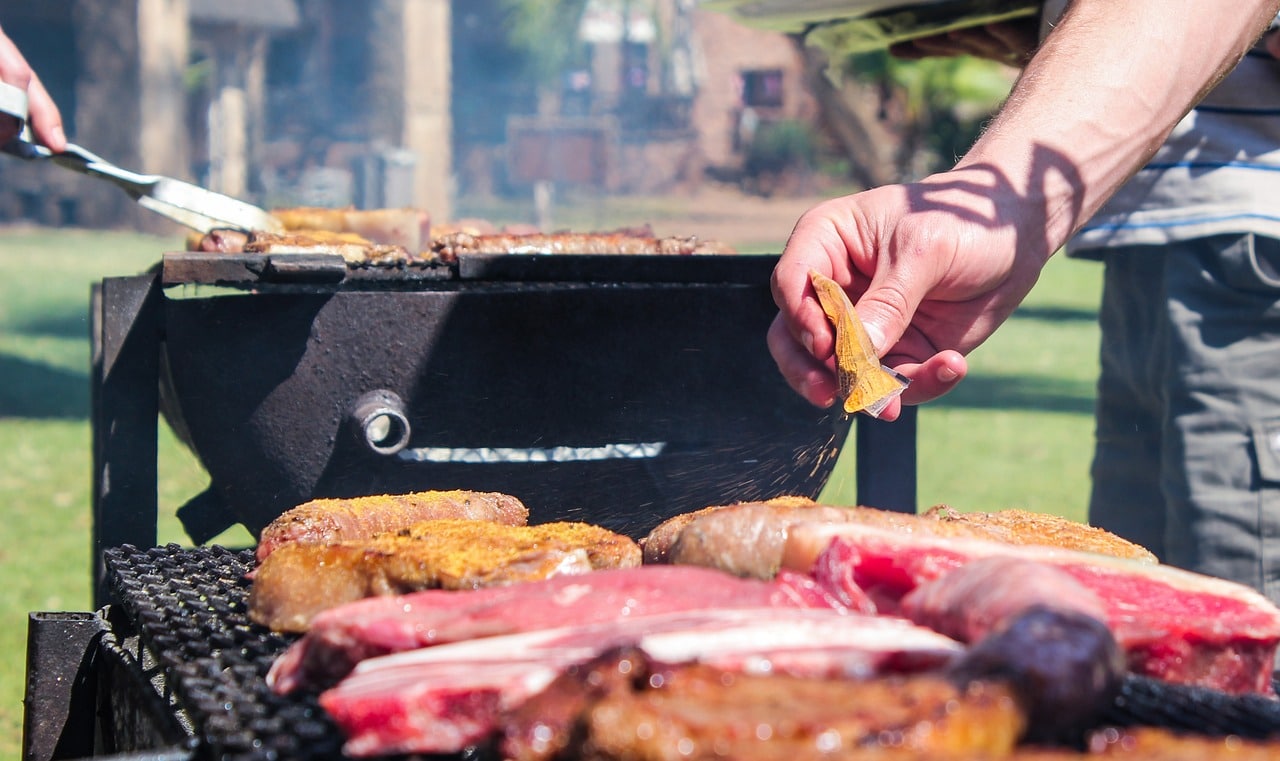Ah, the barbecue! It’s an age-old cooking method that transforms simple ingredients into delectable, smoky delights. It’s not just about burgers and hot dogs. It’s about the art of controlling heat, understanding the nuances of flavor, and mastering the techniques that elevate barbecue from a backyard pastime to culinary greatness. Ready to delve into the secrets of barbecue cooking? Let’s get started.
Understanding the Science of Barbecue
Before you can master the art of barbecue, you need to understand the science behind it. Grilling is a form of direct cooking where the food is placed directly above the heat source. Barbecuing, on the other hand, is a slower, indirect heat cooking method.
A voir aussi : The basics of vegetarian cooking
The science of barbecue revolves around three key elements: heat, meat, and smoke. Heat transforms the raw meat into an edible form, rendering the fat and collagen and creating a variety of flavors and textures. Smoke adds a characteristic flavor that distinguishes barbecue from other cooking methods. Understanding these principles will help you manipulate heat and smoke to achieve the best results.
Choosing the Right Equipment
The tools you choose can have a significant impact on the outcome of your barbecue. From the grill to the wood chips, every element can contribute to the flavor and texture of your food.
Sujet a lire : Basic techniques to master baking
The first piece of equipment you should consider is your grill. Whether you choose a gas grill, charcoal grill, or a smoker, each one has its distinct advantages and drawbacks. Gas grills are convenient and offer easy control over the heat, but they may lack the smoky flavor that makes barbecue unique. Charcoal grills and smokers require more skill to control the heat but can impart a more robust, smoky flavor.
Other equipment, like thermometers, grill brushes, and tongs, are also crucial for a successful barbecue session. A thermometer will ensure your meat is cooked to the right temperature, while a good pair of tongs can make flipping and moving your food much easier.
Selecting and Preparing the Meat
The star of any barbecue is, of course, the meat. Whether you’re grilling chicken, beef, pork, or even fish, selecting and preparing the meat properly will set the stage for a successful barbecue.
When selecting meat for barbecue, look for cuts with a good amount of marbling, or flecks of fat within the muscle tissue. This fat will render out during cooking, keeping the meat moist and flavorful. Also, consider the thickness of your cuts. Thicker cuts may require a slower, indirect cooking method to ensure they cook evenly without drying out.
Once you’ve selected your meat, you’ll need to prepare it for the grill. This may involve marinating the meat, applying a rub, or even brining it to lock in moisture and flavor.
Mastering the Grilling Technique
The key to great barbecue is not just what you cook, but how you cook it. The grilling technique you employ can significantly affect the final product’s taste, texture, and appearance.
There are two primary grilling techniques: direct grilling and indirect grilling. Direct grilling involves cooking the food directly over the heat source and is best for thinner cuts of meat or foods that cook quickly. Indirect grilling means placing the food away from the heat source, allowing it to cook slow and low. This method is ideal for larger or tougher cuts of meat that need more time to become tender.
Regardless of the technique you choose, it’s crucial to control your grill’s temperature. Too hot, and your food can burn on the outside before it’s cooked on the inside. Too cool, and your food may dry out before it’s done.
Incorporating Flavor with Smoke and Sauces
The final secret to mastering barbecue cooking lies in the flavor. Smoke and sauces are two powerful flavoring agents that can elevate your barbecue to new heights.
Smoke not only cooks your food but also imparts a unique flavor. The type of wood you use for smoking can significantly influence the taste of your barbecue. Hardwoods like oak, hickory, and mesquite are commonly used for their robust, smoky flavors.
Sauces can add another layer of flavor to your barbecue. Whether you prefer a tangy, vinegar-based sauce or a sweet, sticky barbecue sauce, applying it at the right time can make all the difference. Apply your sauce too early, and it can burn before your food is done. Apply it too late, and it won’t have time to meld with the meat’s flavors.
Barbecue cooking is an art form steeped in tradition and technique. Understanding the science, selecting the right equipment and meat, mastering the grilling technique, and incorporating flavor with smoke and sauces are the secrets to achieving barbecue perfection. So next time you fire up the grill, remember these tips and techniques to elevate your barbecue game.
Exploring Different Barbecue Styles
Now that you’ve grasped the fundamental elements of barbecue, it’s time to discover different barbecue styles. Each region has its unique barbecue style, characterized by the choice of meat, the sauce, the spices, and the cooking technique.
In the United States, there are four primary barbecue styles: Texas, Carolina, Kansas City, and Memphis. Texas-style barbecue, for instance, is famous for its beef brisket smoked over mesquite wood, with a thick, sweet sauce served on the side. Carolina-style barbecue, on the other hand, centers on pork, usually pulled or chopped, served with a thin, tangy, vinegar-based sauce.
Kansas City-style barbecue embraces a wide variety of meats, including pork, beef, and even lamb. The meats are smoked over a variety of woods and slathered in a thick, sweet, and tangy sauce. Memphis-style barbecue, known for its ribs, can be served “wet” (with sauce) or “dry” (seasoned with dry rub).
Exploring different barbecue styles can be a culinary journey in itself. Each style offers its unique flavors, and by understanding these regional variations, you can start to develop your style, mixing, and matching elements from different traditions.
Hosting a Memorable Barbecue Event
Barbecue is more than just food – it’s a social event. Hosting a barbecue event can be a wonderful way to bring people together, whether it’s a casual backyard gathering or a large celebration.
When planning a barbecue, consider your guests’ preferences and dietary restrictions. Make sure you have a variety of meats and vegetarian options available. Remember, barbecue isn’t just about the meat – grilled vegetables, salads, and side dishes play a vital role too.
Keep in mind that barbecuing is a slow process, so plan your timing carefully. Some cuts of meat can take several hours to cook, so you may need to start your preparations well in advance.
Create the right ambiance for your barbecue. Outdoor lighting, comfortable seating, and good music can make your barbecue event more enjoyable. And most importantly, make sure to enjoy yourself. Barbecuing is about having fun, and your guests will appreciate the warmth and hospitality.
Conclusion
Barbecue cooking is a culinary adventure that combines science, art, and tradition. From understanding the principles of heat, meat, and smoke to choosing the right equipment and mastering grilling techniques, every step contributes to the final result. Exploring different barbecue styles can broaden your culinary horizons and inspire you to create your unique barbecue signature. Hosting a barbecue event is not just about serving delicious food but also about creating memorable experiences. So fire up your grill, invite your friends and family, and embark on your barbecue journey. Happy grilling!




































